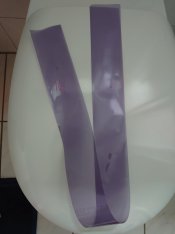Philipp Grewenbach
Member
Hello together,
sorry for posting possibly yet another of many "blank roll" threads, but I really do not know why my problem occured.
I recently bought a new 120 roll of CineStills BWXX (which is re-spooled Kodak Double-X), shot it in my Bronica ETRS at EI 250. Today, I developed it. I used Bellini D96, Stock solution (no dilution) for 6 minutes 40 seconds with continous Agitation. After that thorough wash, fix, wash. However, to my great disapointment, the roll came out completely blank.
Now I know this sounds like it wasn't developed, but I am 100% sure that I put the developer in first, then Water, then fix.
The D96 was not completely new, I had the bottle since one year, and I have previously developed 4 rolls of Ferrania P30 in it, which all came out fine. The last good roll of P30 was November 2020. Could the developer have gone completely bad in this time? It was however stored in the full bottle... And I just tested its pH, which is about 10, which seems good to me...
And I'd expect to see at least something, perhaps underdeveloped, if the developer was too old... Or not?
Any suggestions or advice would be appreciated, as I am quite clueless what caused this issue.
sorry for posting possibly yet another of many "blank roll" threads, but I really do not know why my problem occured.
I recently bought a new 120 roll of CineStills BWXX (which is re-spooled Kodak Double-X), shot it in my Bronica ETRS at EI 250. Today, I developed it. I used Bellini D96, Stock solution (no dilution) for 6 minutes 40 seconds with continous Agitation. After that thorough wash, fix, wash. However, to my great disapointment, the roll came out completely blank.
Now I know this sounds like it wasn't developed, but I am 100% sure that I put the developer in first, then Water, then fix.
The D96 was not completely new, I had the bottle since one year, and I have previously developed 4 rolls of Ferrania P30 in it, which all came out fine. The last good roll of P30 was November 2020. Could the developer have gone completely bad in this time? It was however stored in the full bottle... And I just tested its pH, which is about 10, which seems good to me...
And I'd expect to see at least something, perhaps underdeveloped, if the developer was too old... Or not?
Any suggestions or advice would be appreciated, as I am quite clueless what caused this issue.






